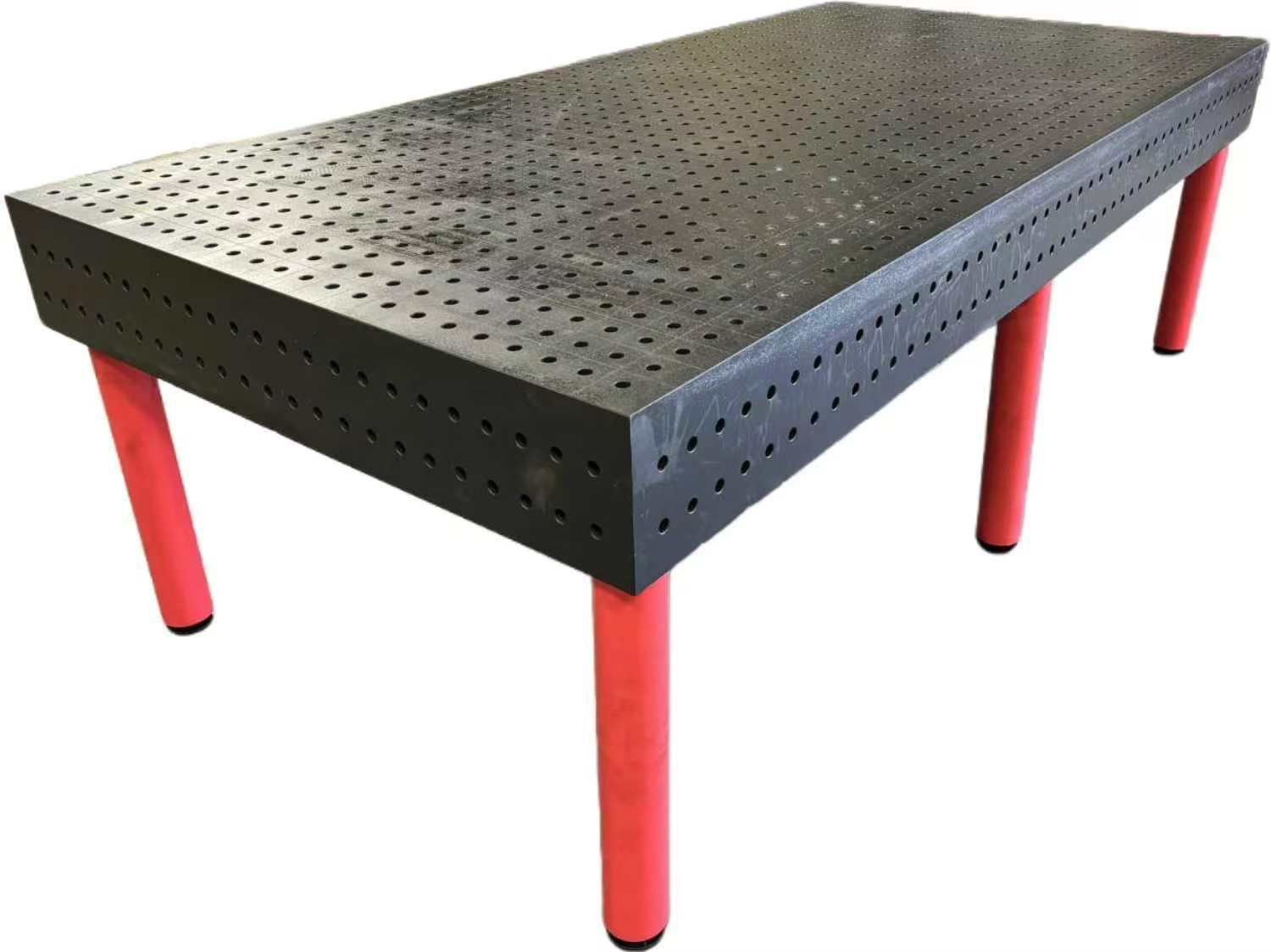Why Is a Welding Table an Essential Tool for Achieving Precision and Efficiency in Metalworking?
2025-02-25
In metalworking, welding is a key process that requires precision, stability, and safety. Whether you are an experienced welder or just starting, having the right equipment can make a world of difference in the quality of your work. A welding table is one of the most essential pieces of equipment for any welding project. But why exactly is a welding table so important? How does it contribute to the precision, efficiency, and safety of the welding process?
What Is a Welding Table and What Makes It Unique?
A welding table is a flat, durable surface designed specifically to support and stabilize materials during the welding process. It is typically made from metal, such as steel or cast iron, to withstand high heat and provide the strength required for welding heavy materials. What sets a welding table apart from an ordinary workbench is its ability to endure the intense temperatures and sparks generated during welding without compromising its structure or functionality.
These tables are often equipped with additional features, such as clamps, adjustable height settings, and integrated grids for precise positioning. Some models may also have magnetic or removable components to enhance flexibility for different types of projects.
What Are the Key Benefits of Using a Welding Table?
1. Enhanced Stability and Safety
Welding tables are built to provide a stable surface for metal components during the welding process. This reduces the risk of distortion or movement, which can result in inaccurate welds or even dangerous sparks. The sturdy design also helps prevent tipping or damage to the workpiece, improving the overall safety of the welding environment.
2. Precision in Welding
Precision is essential in welding, especially for projects that require intricate designs or strict tolerances. A welding table allows you to properly align and secure your workpieces, ensuring that they remain in the correct position while you weld. Some tables are equipped with grids or rulers, further aiding in precise measurements and alignment for consistent results.
3. Improved Efficiency and Productivity
A well-designed welding table helps streamline the entire welding process. With adjustable heights, proper clamps, and organizational features, you can save time by easily setting up and transitioning between tasks. A clutter-free, organized workspace allows welders to focus on the task at hand, leading to faster turnaround times and increased productivity.
4. Versatility for Various Projects
Welding tables are incredibly versatile, making them suitable for a wide range of welding applications. Whether you are working on small-scale repairs, large construction projects, or custom metal fabrication, the table can adapt to your needs. Adjustable surfaces, detachable grids, and modular components make it easy to work with different materials and welding techniques.
5. Heat Resistance and Durability
Given that welding generates high temperatures, a welding table is designed to withstand these extreme conditions without warping or breaking down. High-quality tables are made from heat-resistant materials, such as stainless steel, which ensures that they remain durable and functional over time.
Where Are Welding Tables Commonly Used?
- Metal Fabrication: Whether it's creating custom metal parts or assembling large metal structures, welding tables are used in workshops and factories to hold and stabilize metal during the welding process.
- Automotive Industry: Welding tables are used to weld car parts, chassis, exhaust systems, and other automotive components that require precision and stability.
- Construction and Repair: For construction or repair projects involving metal structures, welding tables provide the ideal surface for welding beams, frames, and other structural elements.
- Aerospace and Defense: In industries that require high levels of accuracy, such as aerospace, welding tables are essential for producing critical components with exact specifications.
- Art and Sculpture: Artists and metalworkers often use welding tables for sculpting metal, as the stable surface aids in creating detailed and intricate designs.
How to Choose the Right Welding Table for Your Needs?
- Material: Select a welding table made from durable, heat-resistant materials like steel or cast iron. The material should be able to withstand high temperatures and resist warping over time.
- Size and Weight Capacity: Consider the size of your typical projects and choose a table that can handle the weight of the materials you plan to weld. Larger, heavier tables may be necessary for welding large metal sheets or structures.
- Adjustability and Customization: Look for a welding table that offers adjustable heights, movable components, or modular features to enhance flexibility and accommodate different welding techniques.
- Surface Features: Some welding tables come with features like built-in grids, clamping systems, or magnetic mounts for added convenience. These features can make your work easier and more precise.
- Portability: If you need to move the table between work sites, consider a portable welding table that is lightweight and easy to transport without compromising stability.
Conclusion
A welding table is more than just a work surface—it's an essential tool for achieving precise, efficient, and safe results in welding. Whether you're working on small-scale projects or large industrial tasks, a reliable welding table will provide the stability, durability, and organization needed to perform high-quality work. By investing in a high-quality welding table, you can significantly improve both the safety and precision of your welding projects while enhancing your overall productivity.



